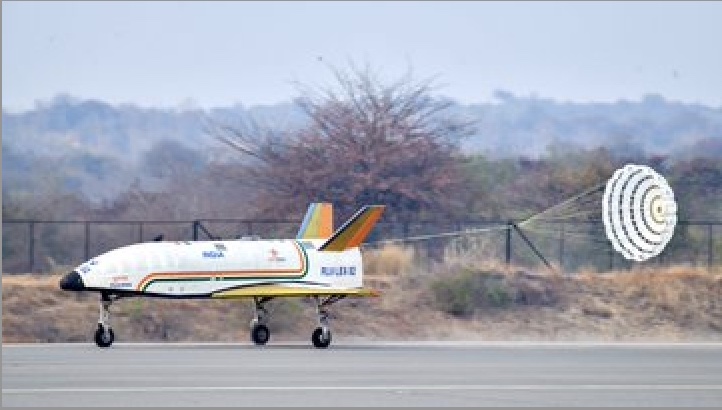Test Landing Of ISRO’s Pushpak ‘Viman’ Successful; Know More About India’s 1st Reusable Launch Vehicle

New Delhi: India saw the successful landing mission of ‘Pushpak,’ India’s first Reusable Launch Vehicle (RLV), on a runway in Karnataka on Friday morning.
The mission was carried out by Indian Space Research Organisation (ISRO) from the Aeronautical Test Range (ATR) in Challakere near Karnataka’s Chitradurg. “Isro nails it again! Pushpak (RLV-TD), the winged vehicle, landed autonomously with precision on the runway after being released from an off-nominal position,” the space organisation wrote on X.
The rocket was dropped from an Air Force helicopter as part of the test. “Pushpak was lifted by an Indian Airforce Chinook helicopter and was released from 4.5 km altitude. After release at a distance of 4 km from the runway, Pushpak autonomously approached the runway along with cross-range corrections. It landed precisely on the runway and came to a halt using its brake parachute, landing gear brakes and nose wheel steering system,” ISRO said in a statement.
It further said that the mission successfully simulated the approach and high-speed landing conditions of RLV returning from space. “With this second mission, ISRO has re-validated the indigenously developed technologies in the areas of navigation, control systems, landing gear and deceleration systems essential for performing a high-speed autonomous landing of a space- returning vehicle. The winged body and all flight systems used in RLV-LEX-01 were reused in the RLV-LEX-02 mission after due certification/clearances. Hence reuse capability of flight hardware and flight systems is also demonstrated in this mission. Based on the observations from RLV-LEX-01, the airframe structure and landing gear were strengthened to tolerate higher landing loads.”
The Pushpak RLV is designed as an all-rocket, fully reusable single-stage-to-orbit (SSTO) vehicle, incorporating several major elements such as the X-33 advanced technology demonstrator, the X-34 testbed technology demonstrator, and the upgraded DC-XA flight demonstrator.
In April last year, the vehicle was successfully landed autonomously after being released from an Indian Air Force Chinook helicopter. This marked a critical milestone for the Pushpak RLV, bringing it closer to achieving orbital re-entry capabilities.
With an investment exceeding Rs 100 crore, the project not only showcases India’s technological prowess but also sets the stage for future endeavours, including the ambitious goal of establishing the Bhartiya Antariksha Station by 2035.

Comments are closed.